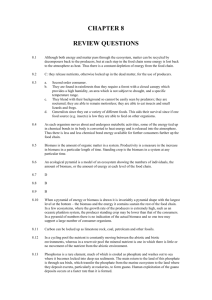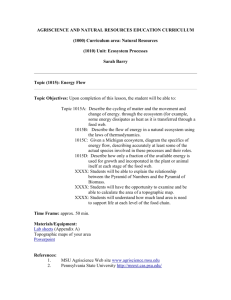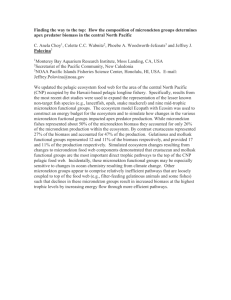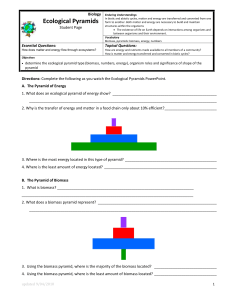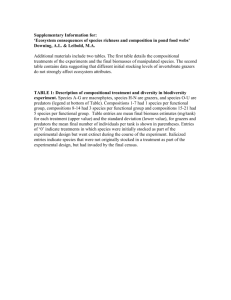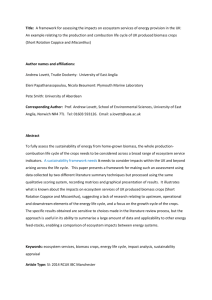Ecosystem definitions A: BIOTIC FACTORS AND ABIOTIC
advertisement
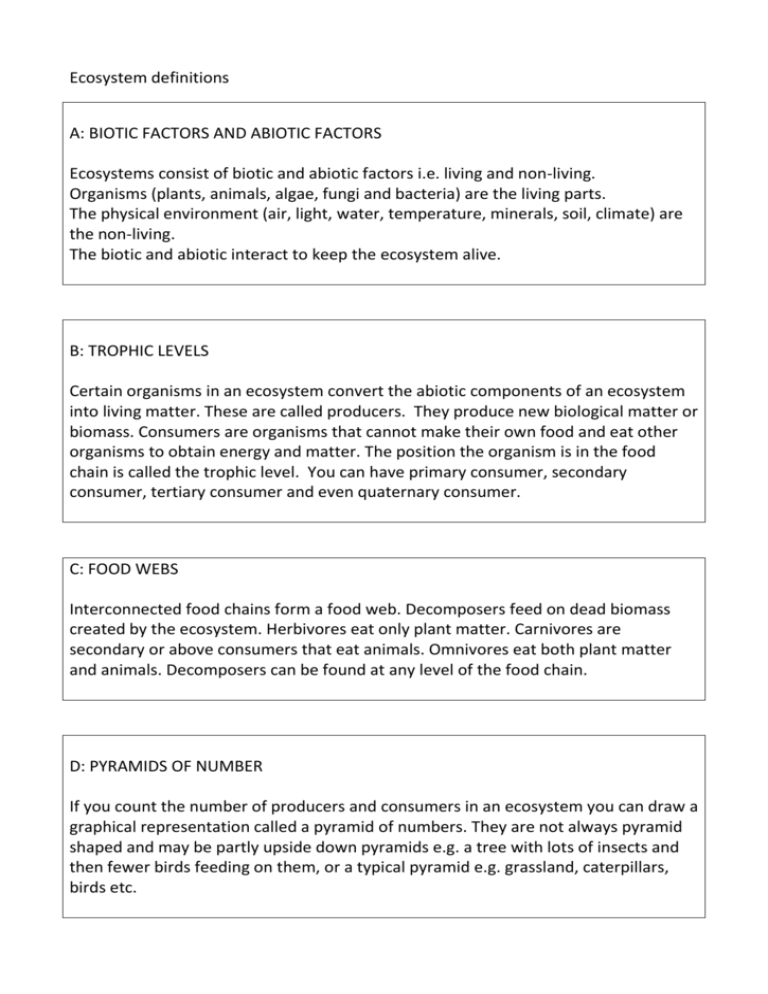
Ecosystem definitions A: BIOTIC FACTORS AND ABIOTIC FACTORS Ecosystems consist of biotic and abiotic factors i.e. living and non-living. Organisms (plants, animals, algae, fungi and bacteria) are the living parts. The physical environment (air, light, water, temperature, minerals, soil, climate) are the non-living. The biotic and abiotic interact to keep the ecosystem alive. B: TROPHIC LEVELS Certain organisms in an ecosystem convert the abiotic components of an ecosystem into living matter. These are called producers. They produce new biological matter or biomass. Consumers are organisms that cannot make their own food and eat other organisms to obtain energy and matter. The position the organism is in the food chain is called the trophic level. You can have primary consumer, secondary consumer, tertiary consumer and even quaternary consumer. C: FOOD WEBS Interconnected food chains form a food web. Decomposers feed on dead biomass created by the ecosystem. Herbivores eat only plant matter. Carnivores are secondary or above consumers that eat animals. Omnivores eat both plant matter and animals. Decomposers can be found at any level of the food chain. D: PYRAMIDS OF NUMBER If you count the number of producers and consumers in an ecosystem you can draw a graphical representation called a pyramid of numbers. They are not always pyramid shaped and may be partly upside down pyramids e.g. a tree with lots of insects and then fewer birds feeding on them, or a typical pyramid e.g. grassland, caterpillars, birds etc. E: PYRAMID OF BIOMASS This is a graph that shows the amount of biomass in each level of an ecosystem. These are usually pyramid shaped as energy and biomass tend to decrease along the food chain. Think about the trees in a rainforest, then the herbivores, then the carnivores – each time there is less of a biomass store. However a field may have a lower amount of biomass in grass than is in cows. This is measured in g/m2. It can be measured as the amount of energy per metre squared i.e. J/m2. F: PYRAMID OF PRODUCTIVITY This is a graph showing the rate of production of a level of the ecosystem in an amount of time. These are always pyramid shaped as there is always more energy in the lower layers than in the higher ones. Because energy is lost through food chains the animals at the top of the food chain are always most at risk from disturbance lower down the chain. If there is a reduction in the number of plants then this will affect the number of animals that eat those plants and so on… This is measured in g/m2/year. G: THE SNOW LEOPARD This animal is found in the mountains of Central Asia. It eats wild sheep and goats. Farms exist on the lower slopes and there are too many domesticated sheep and goats, overgrazing the land. With little food to eat, the snow leopard starts to eat the farmers’ sheep and goats. The farmers then try to kill the snow leopards. There are less than 7000 snow leopards around now and they are designated an Endangered Species. H: BIOACCUMULATION Animals at the top of the food chain are at rsik from what gets into the bottom of the food chain. When DDT was used as a pesticide it accumulated in the plants. Then the animals that ate the grass stored that DDT. Then the animals that ate those animals stored it and so on until the animals at the top of the food chain had lots of DDT. This is called bioaccumulation. The substance also becomes more concentrated in the tissues. This is biomagnification. With a longer lifespan, animals at the top of the chain accumulate more.
